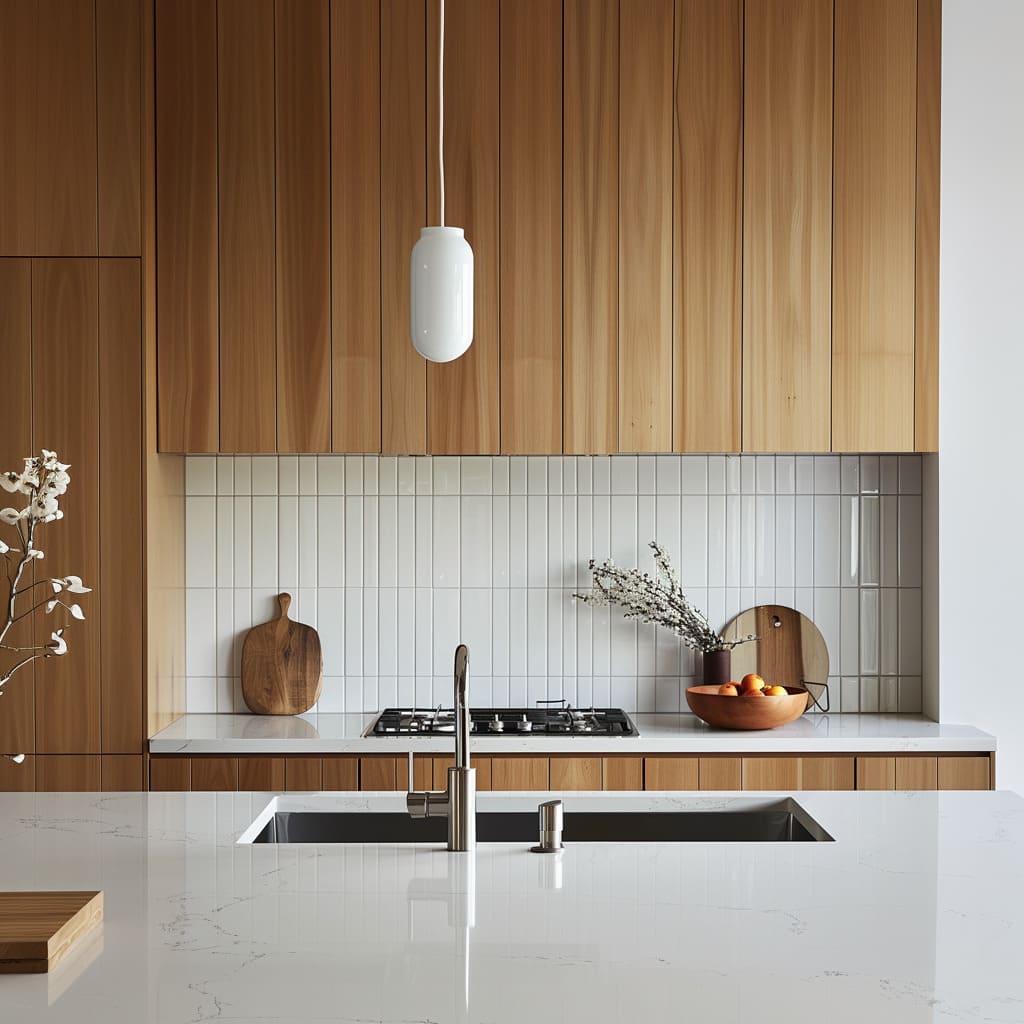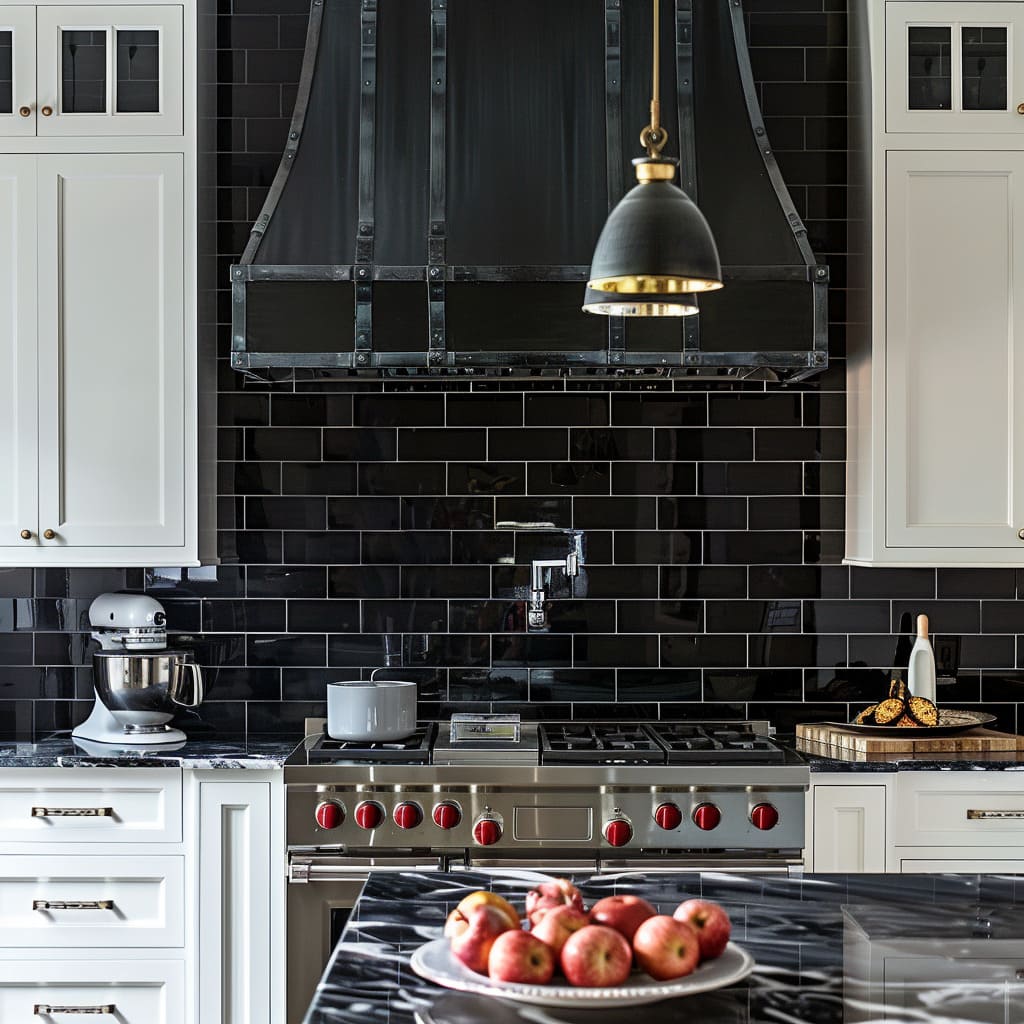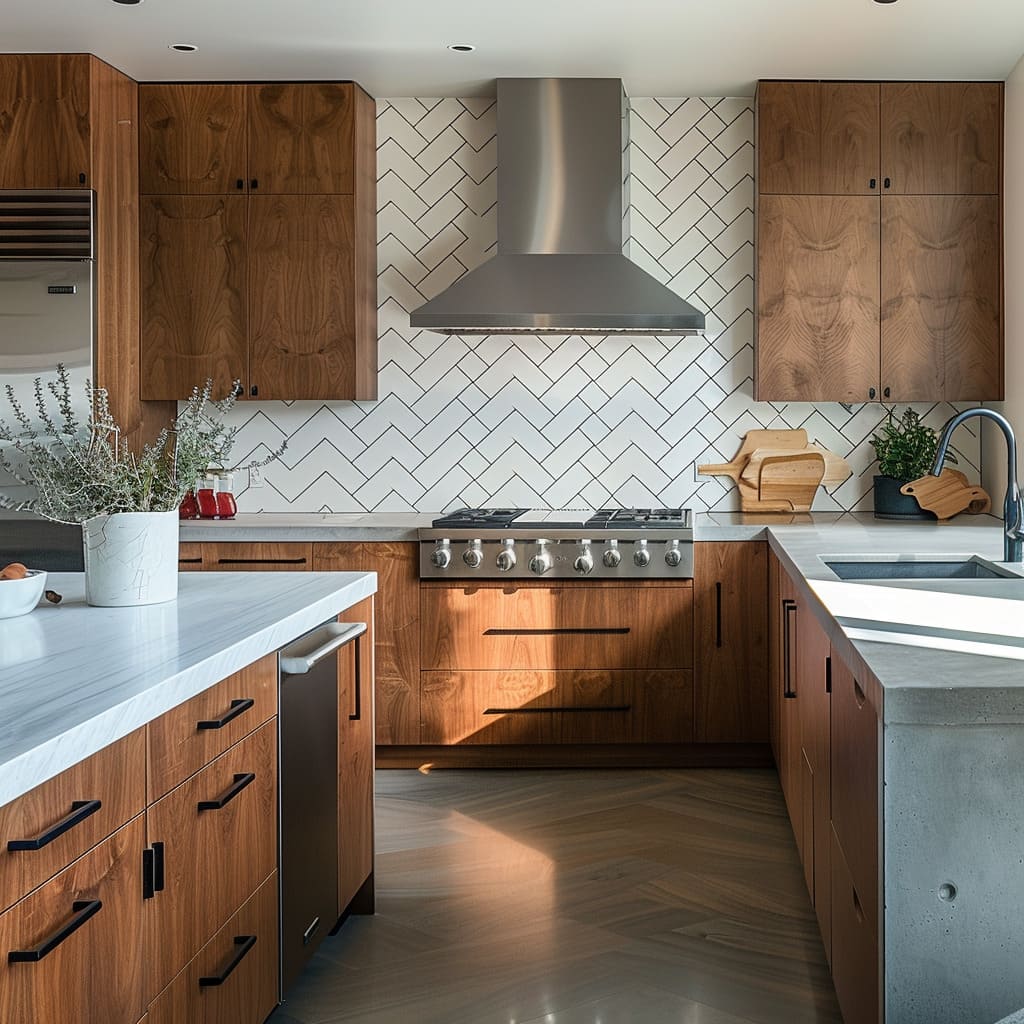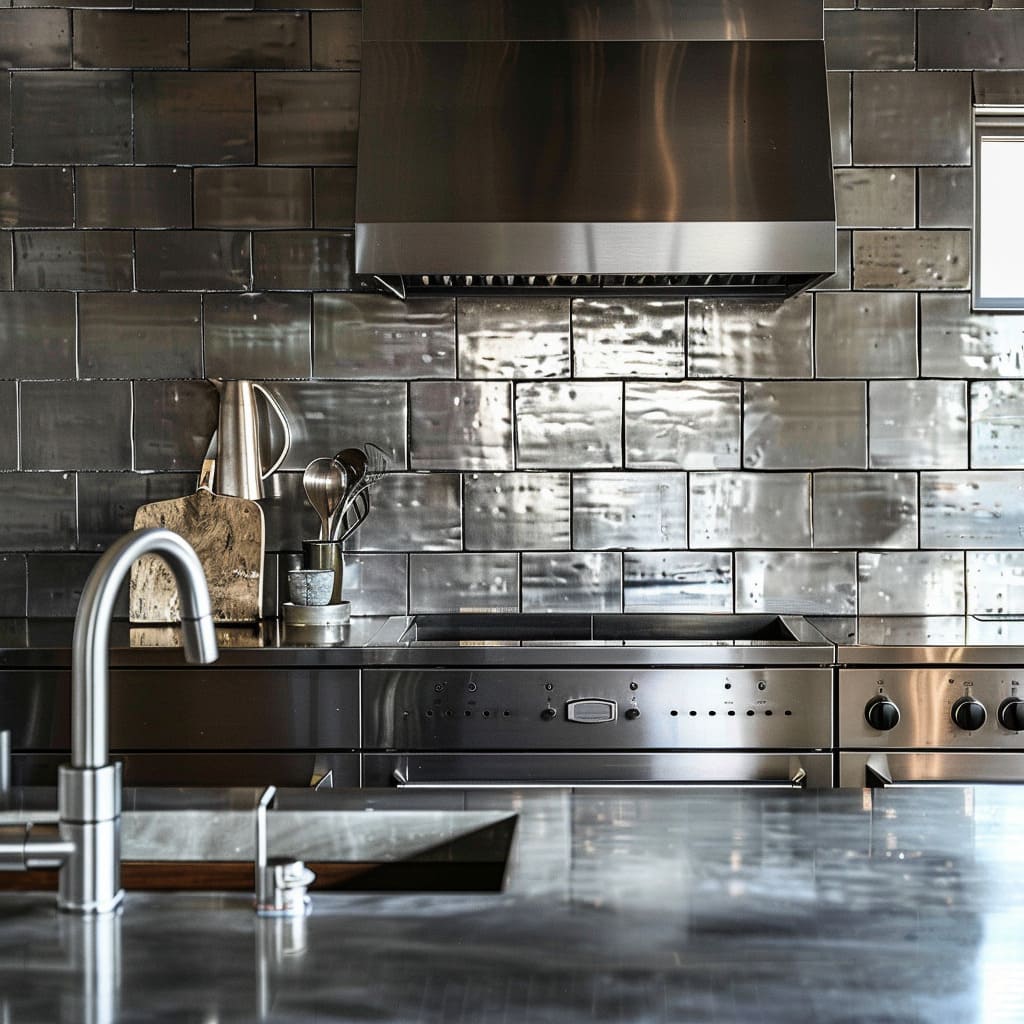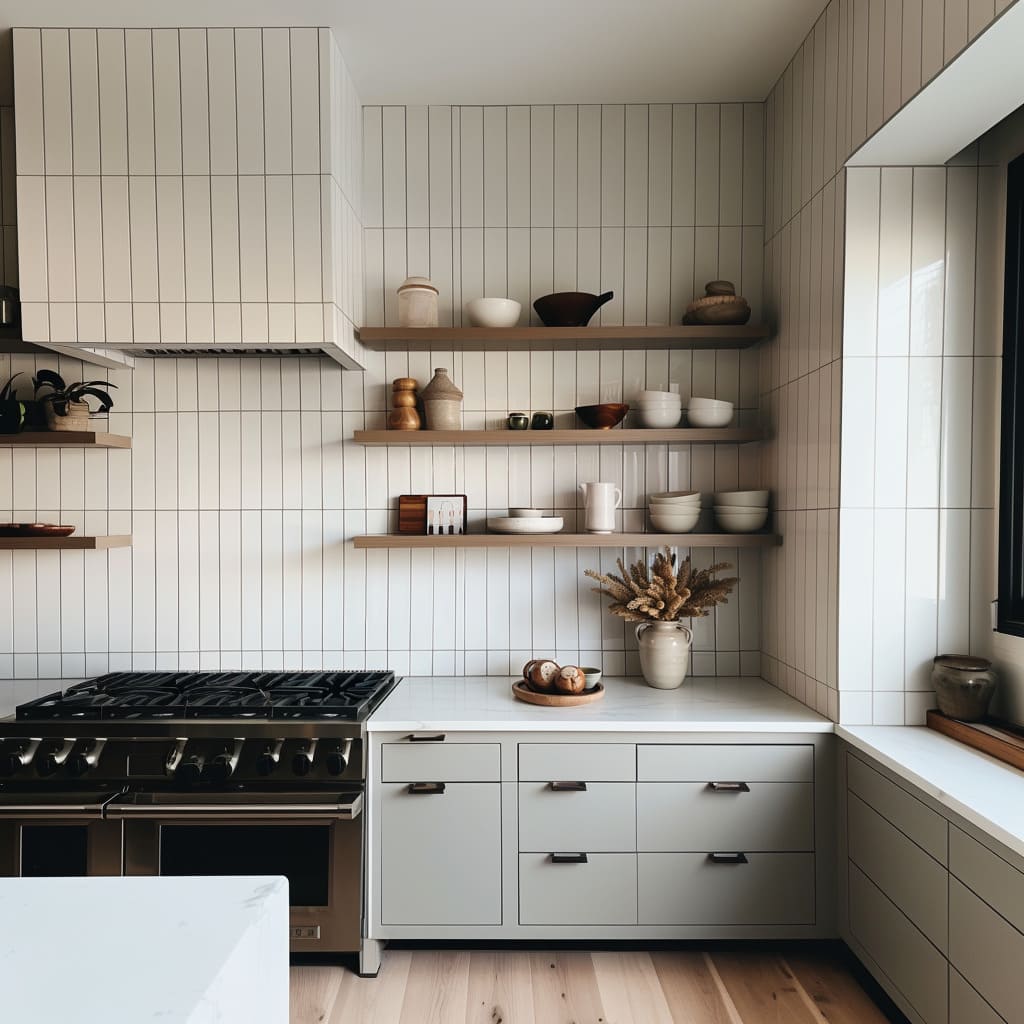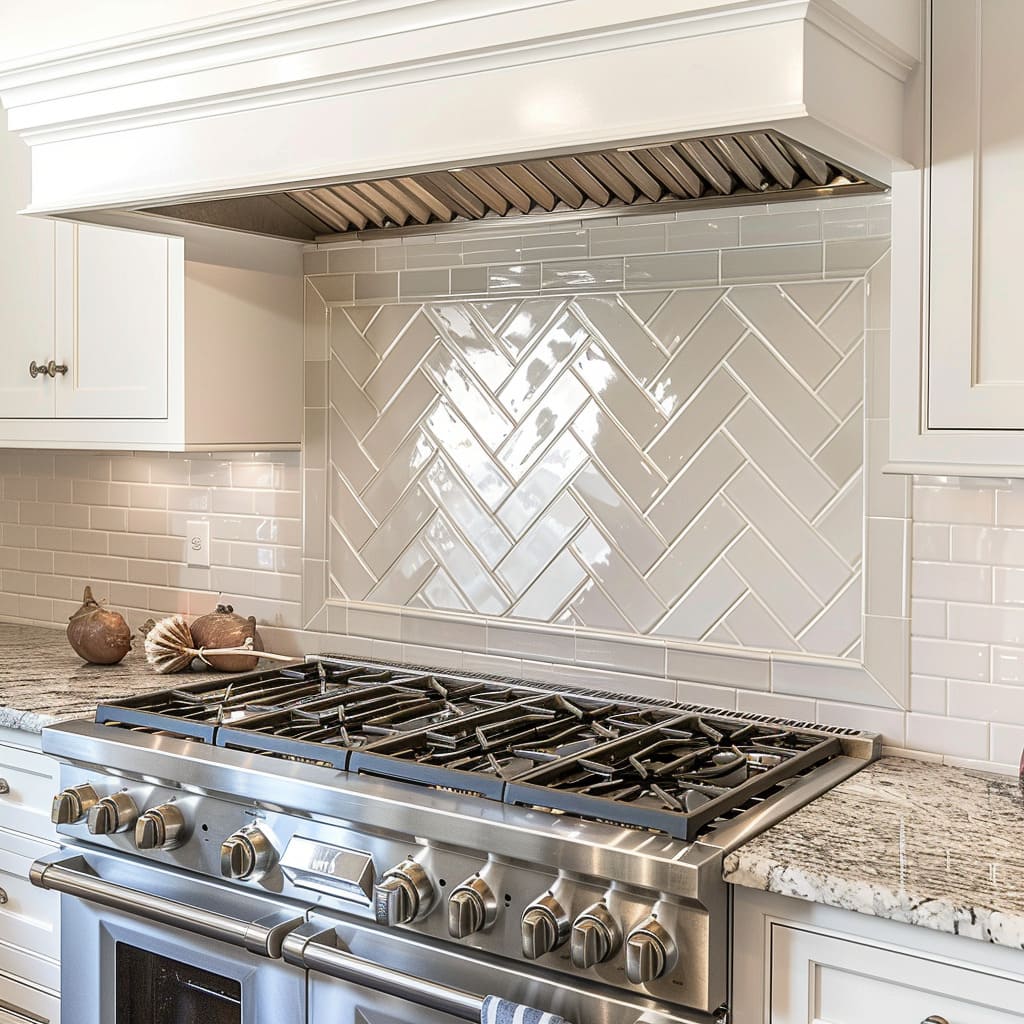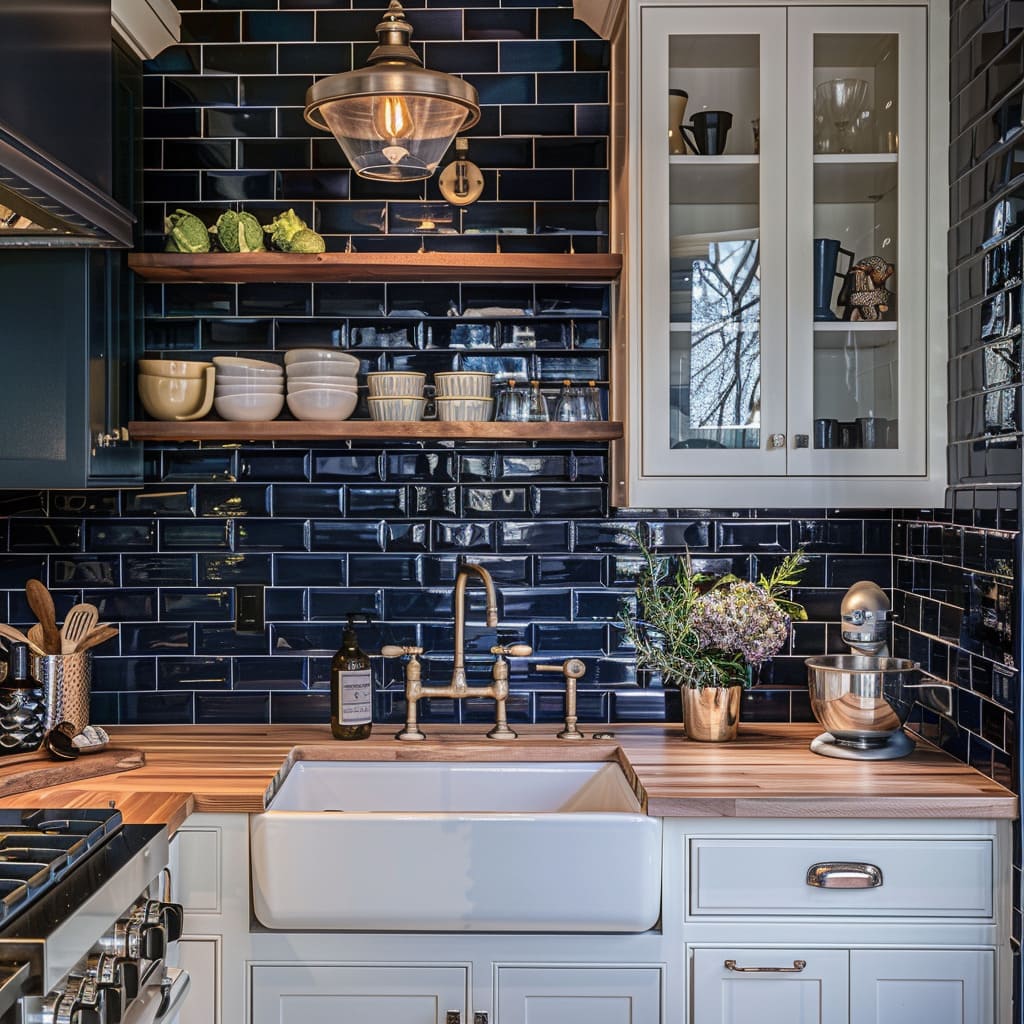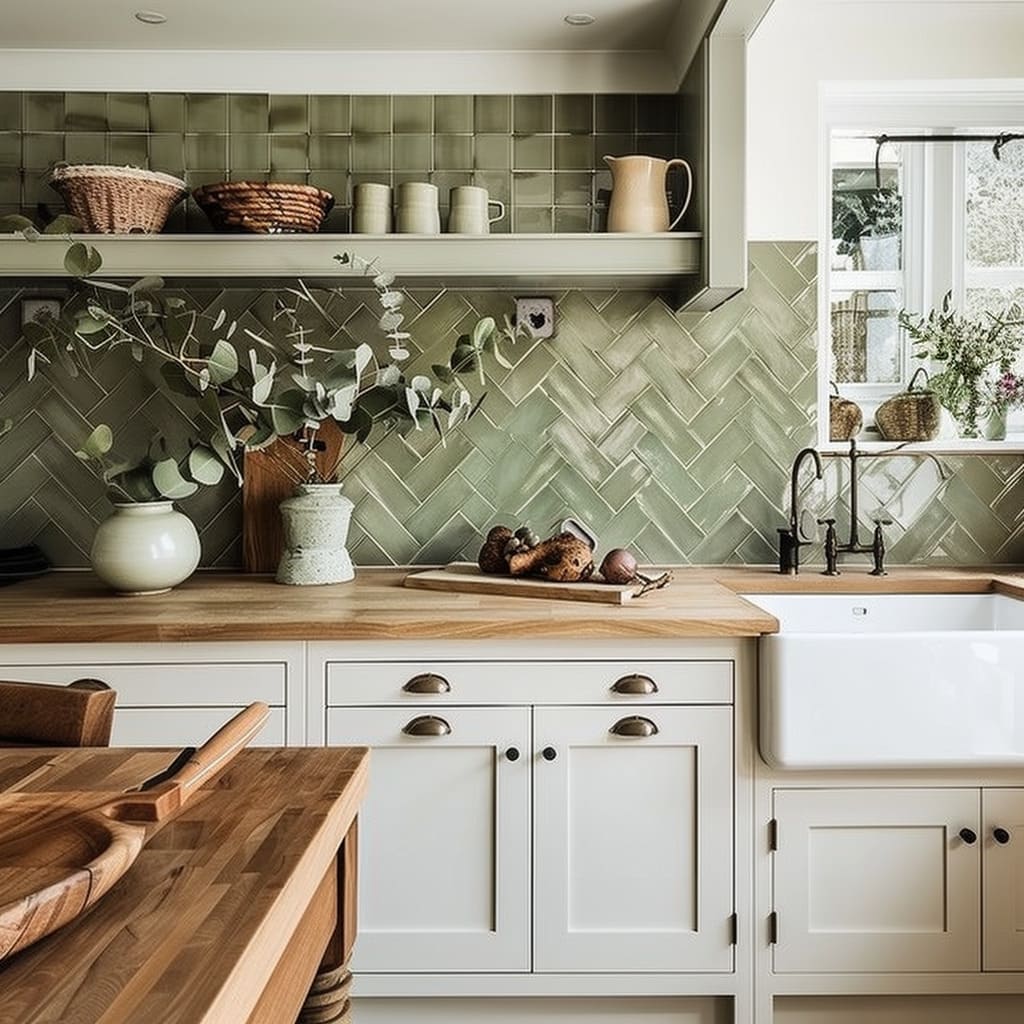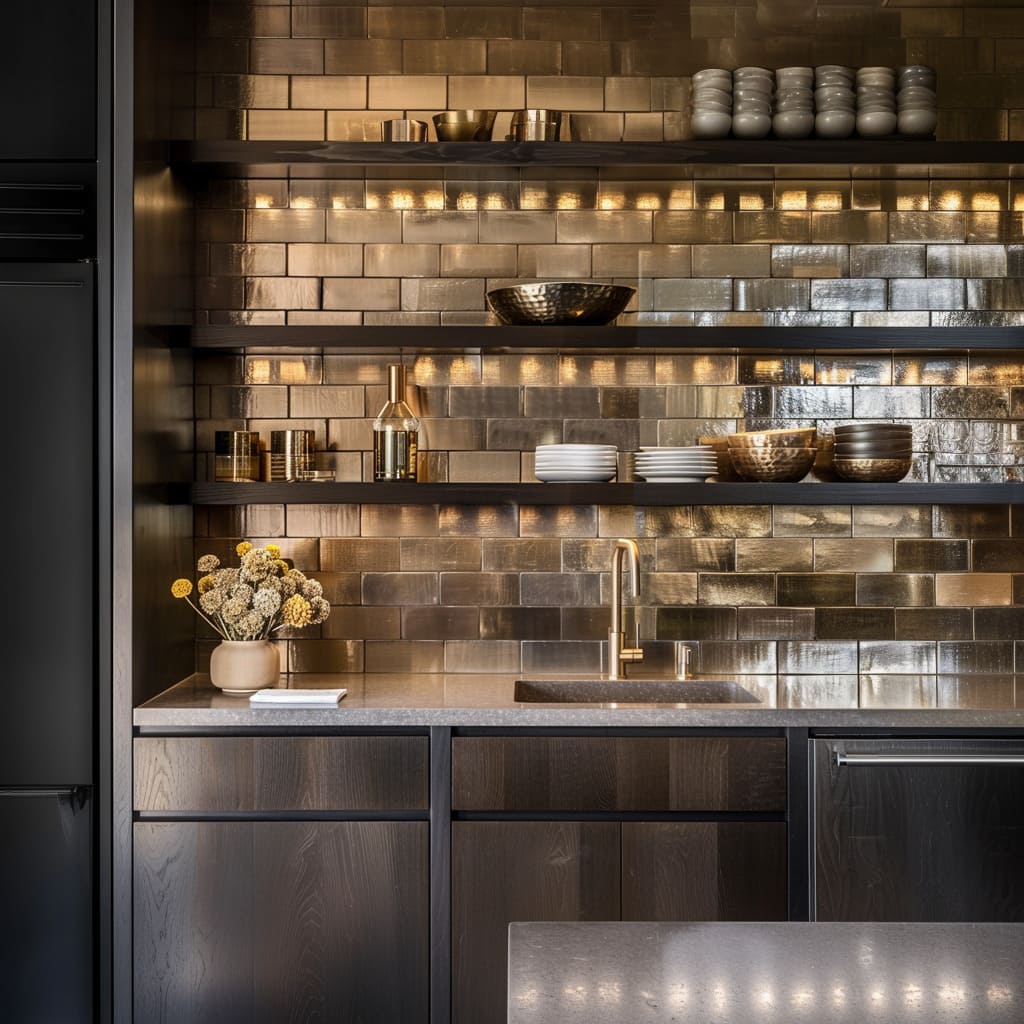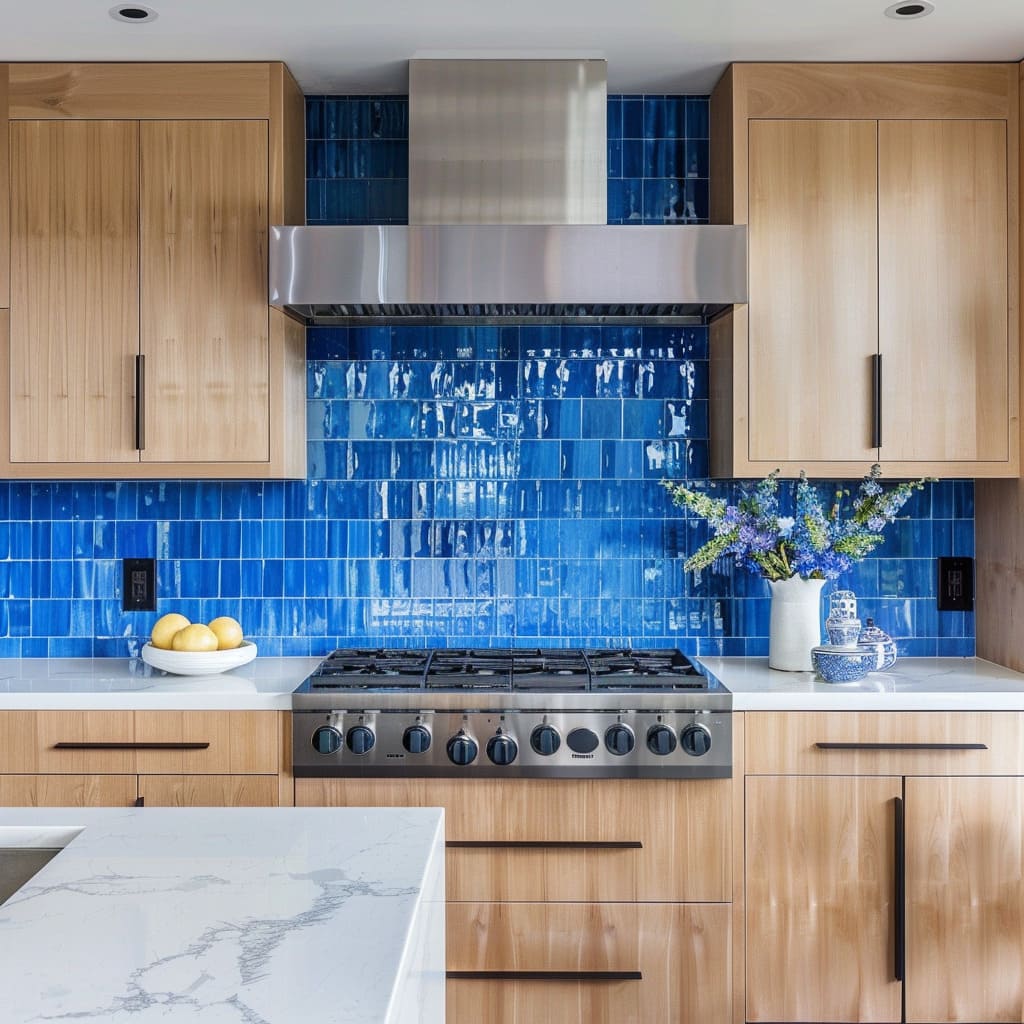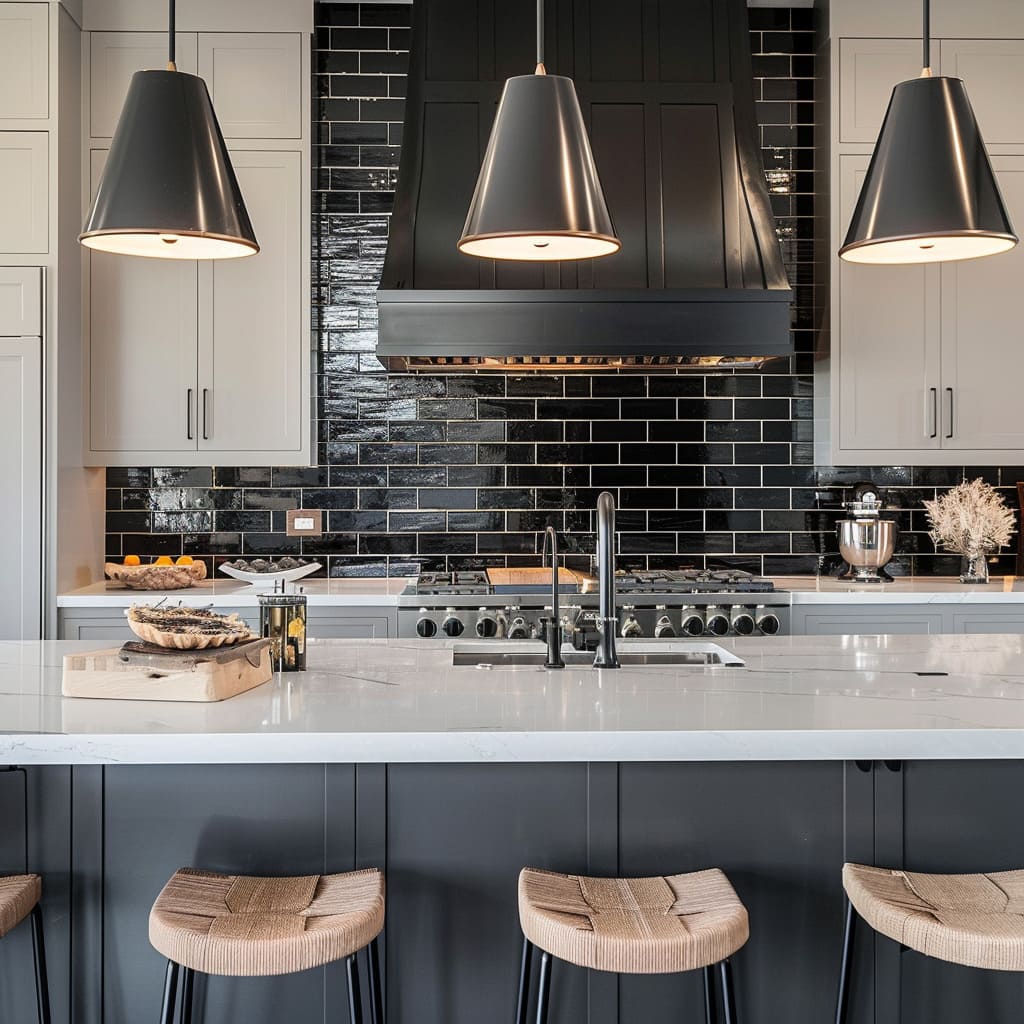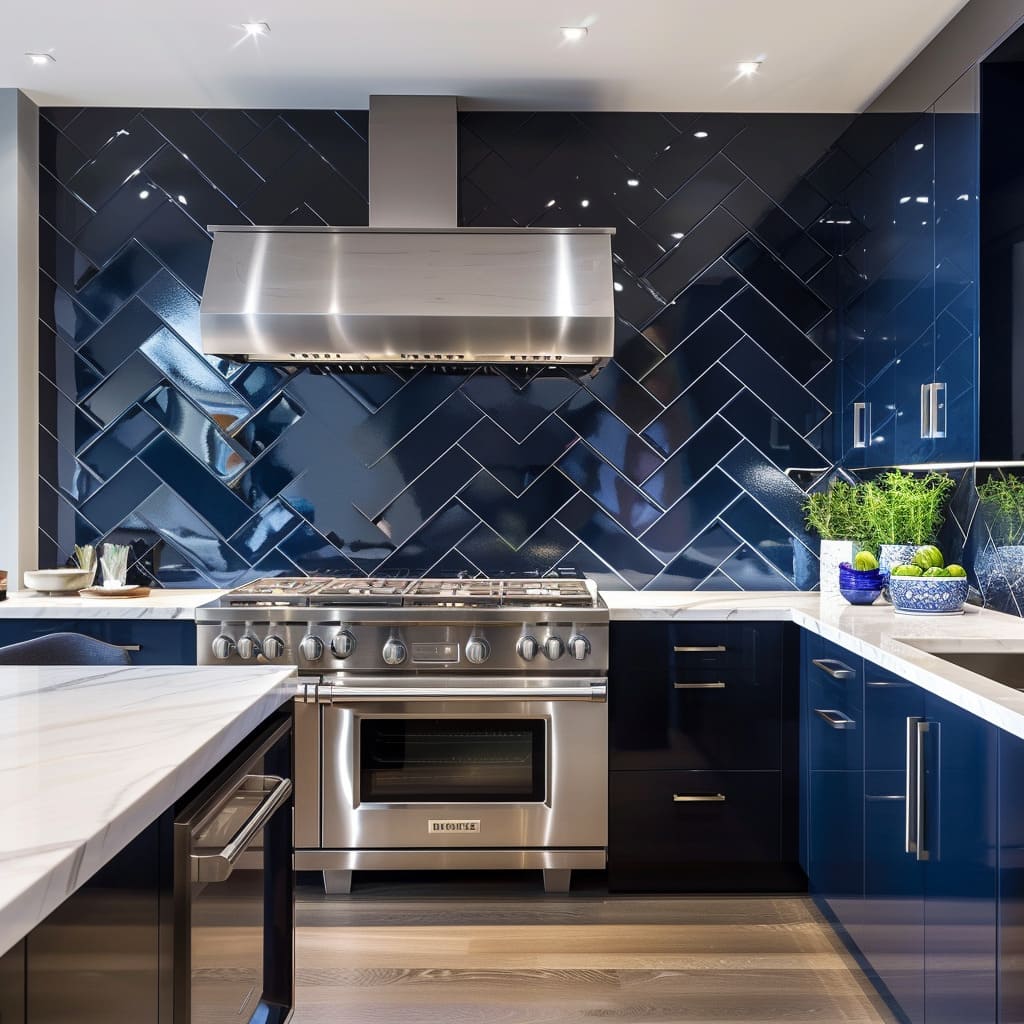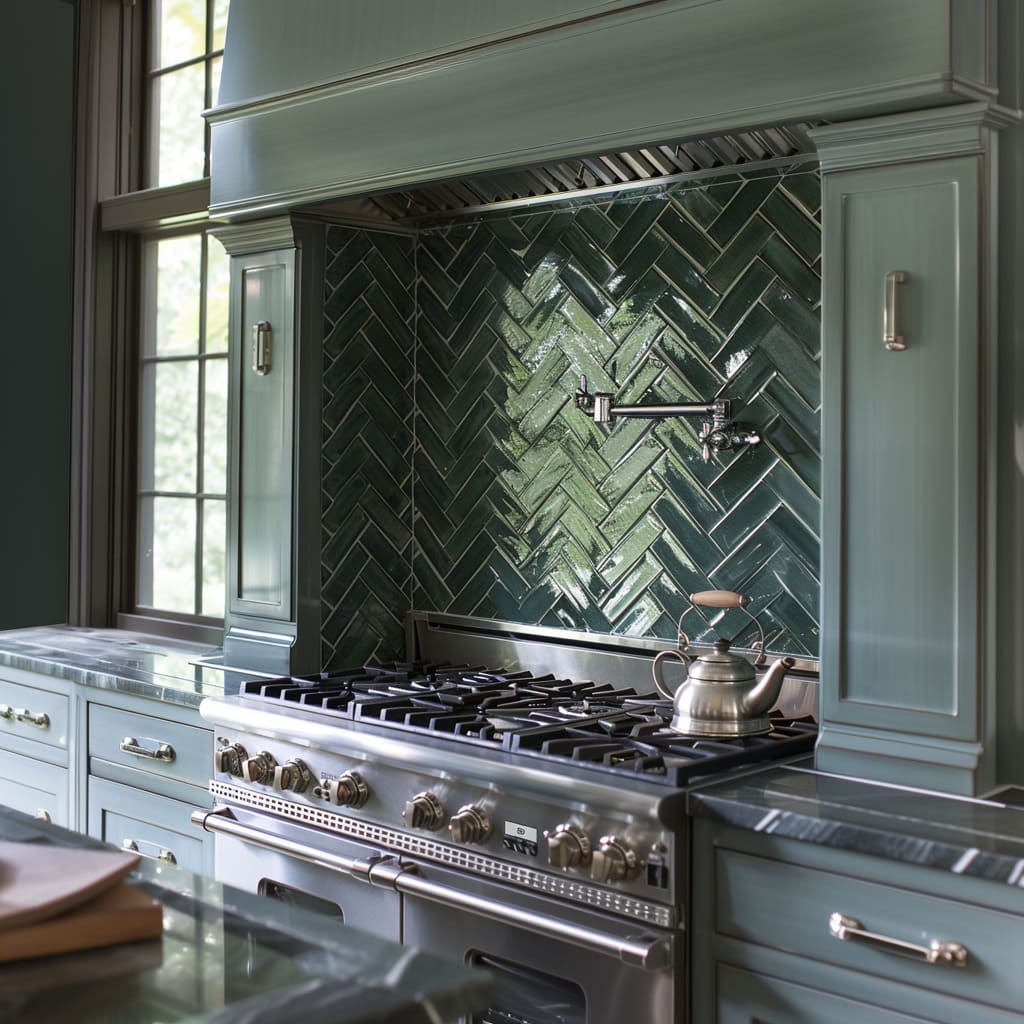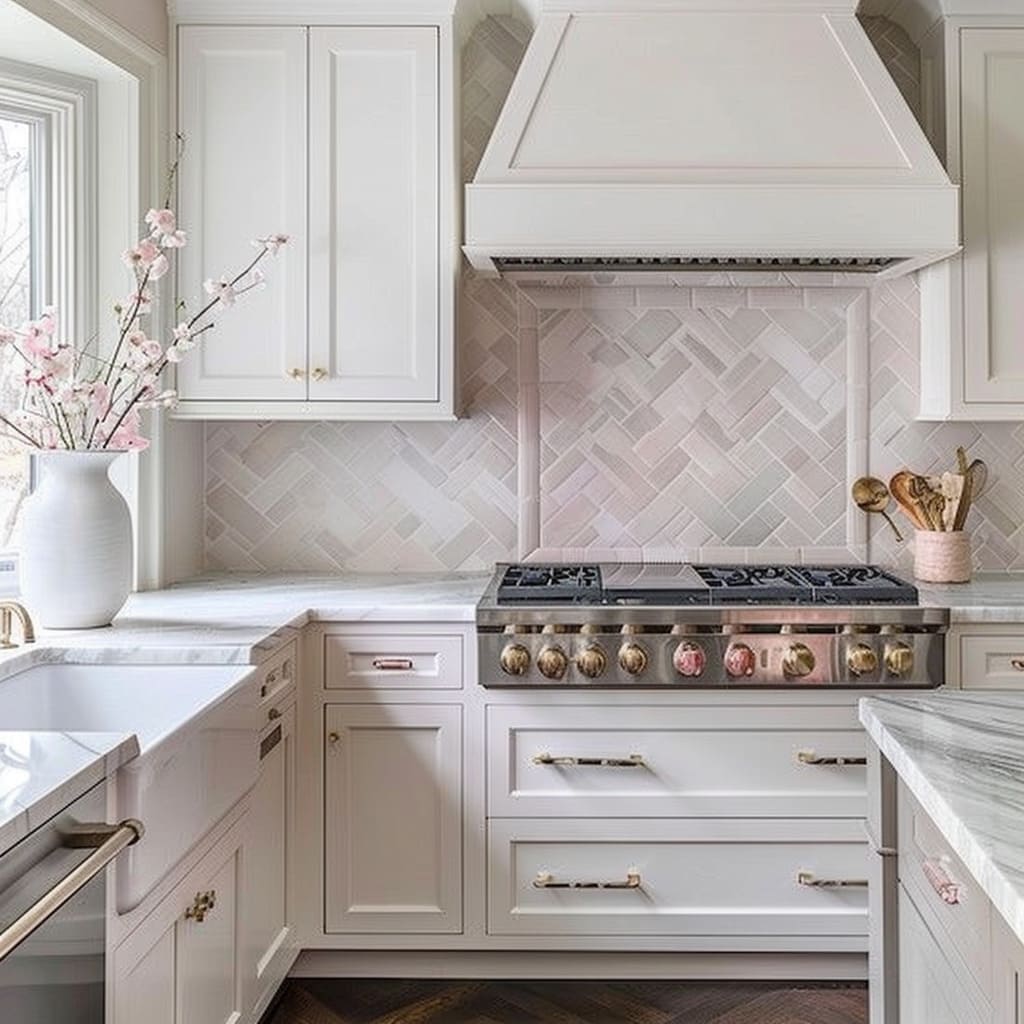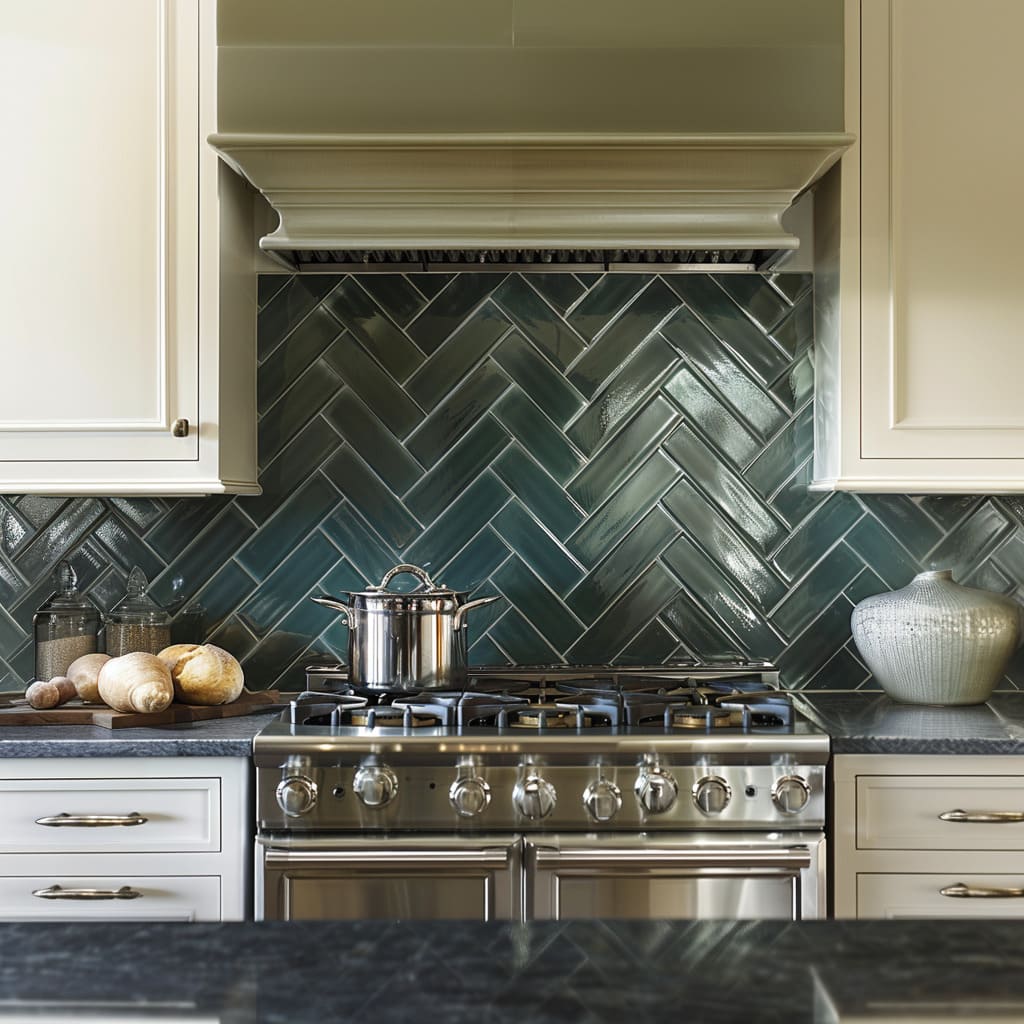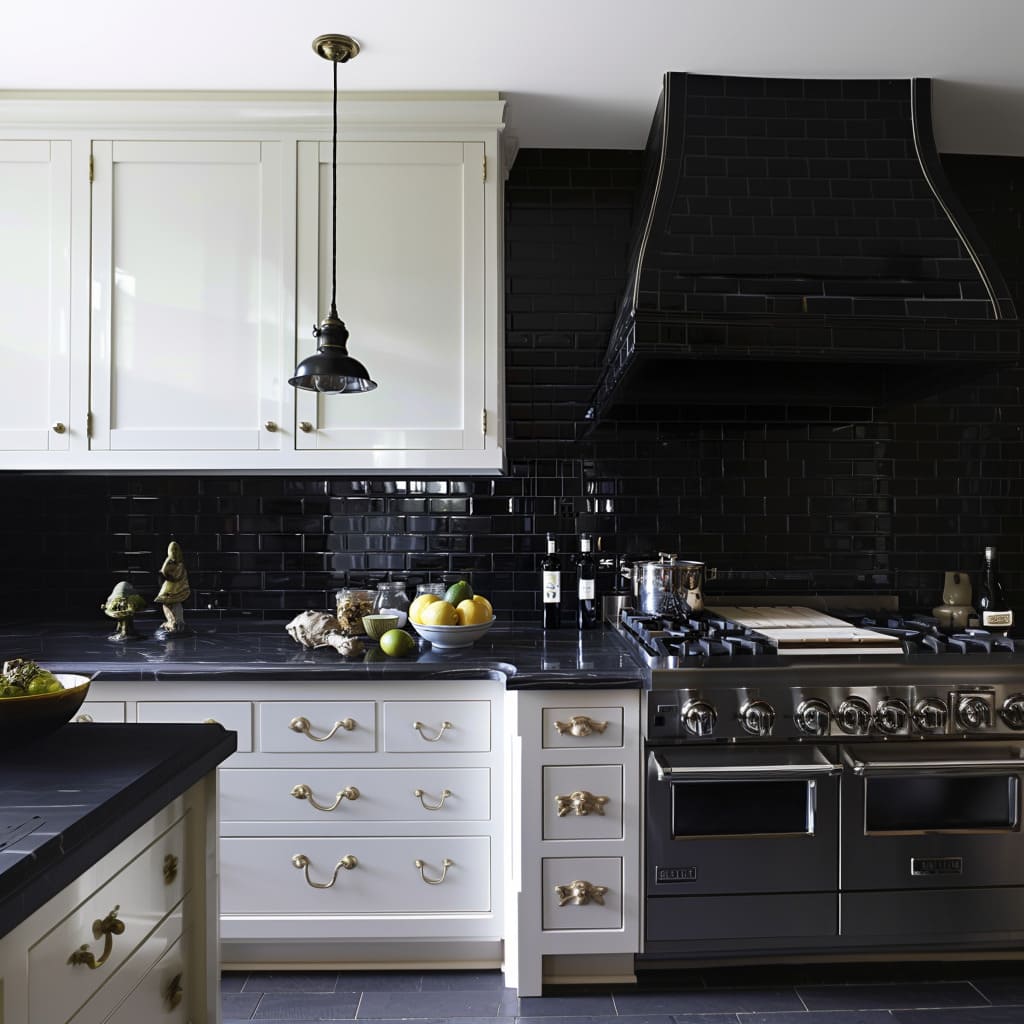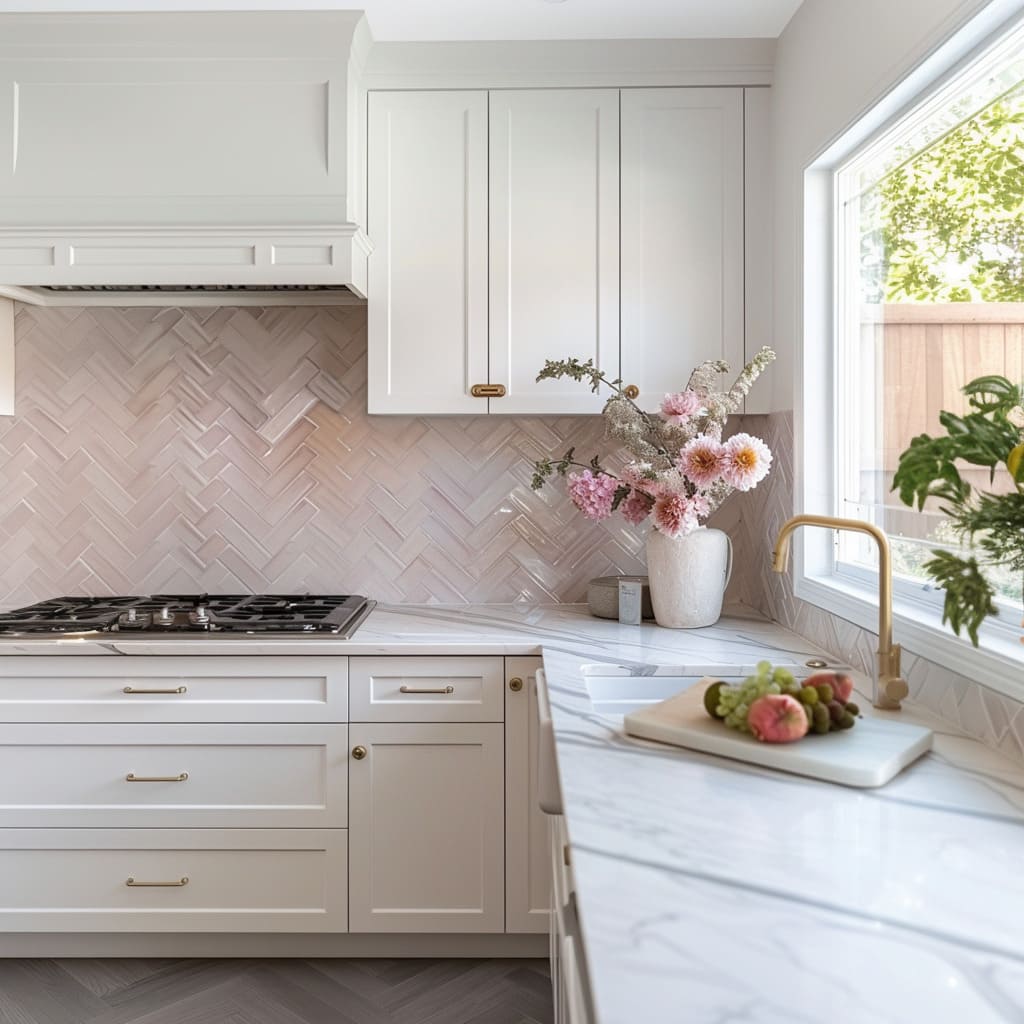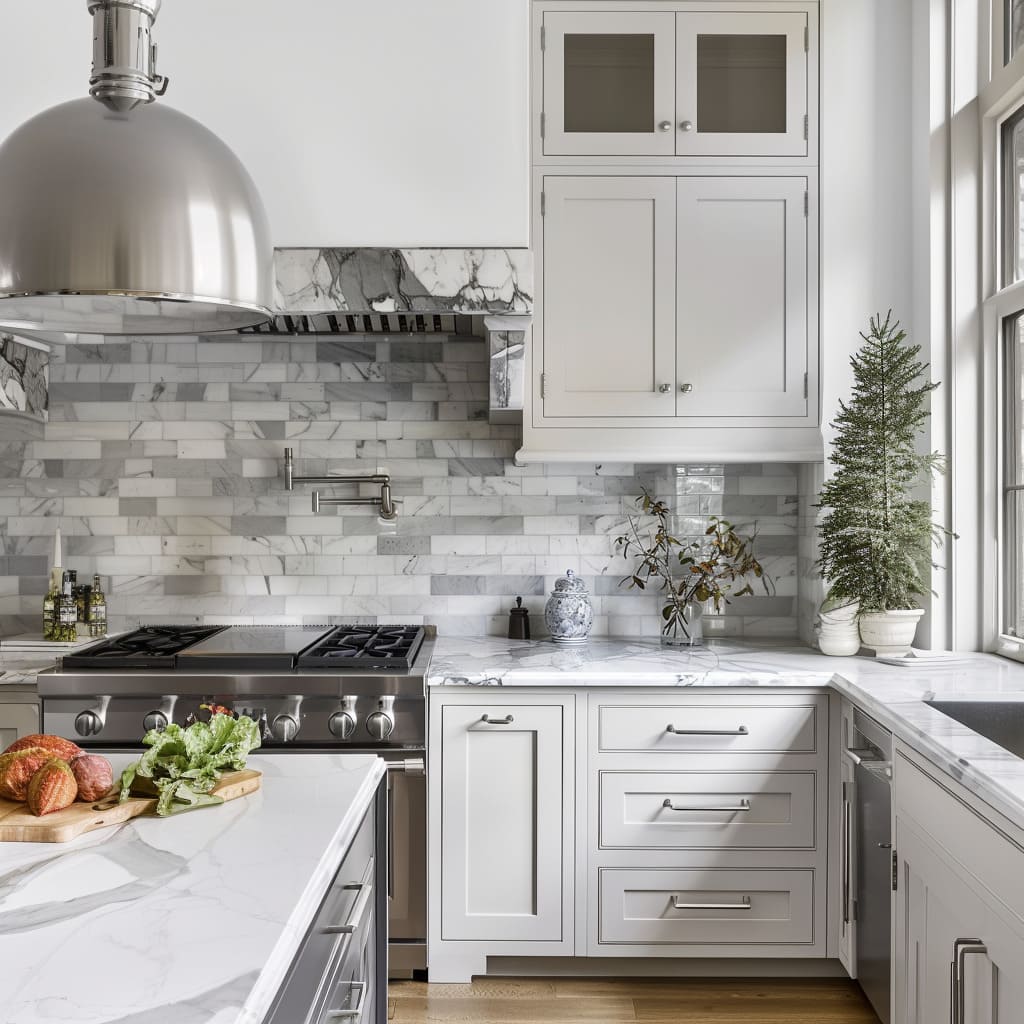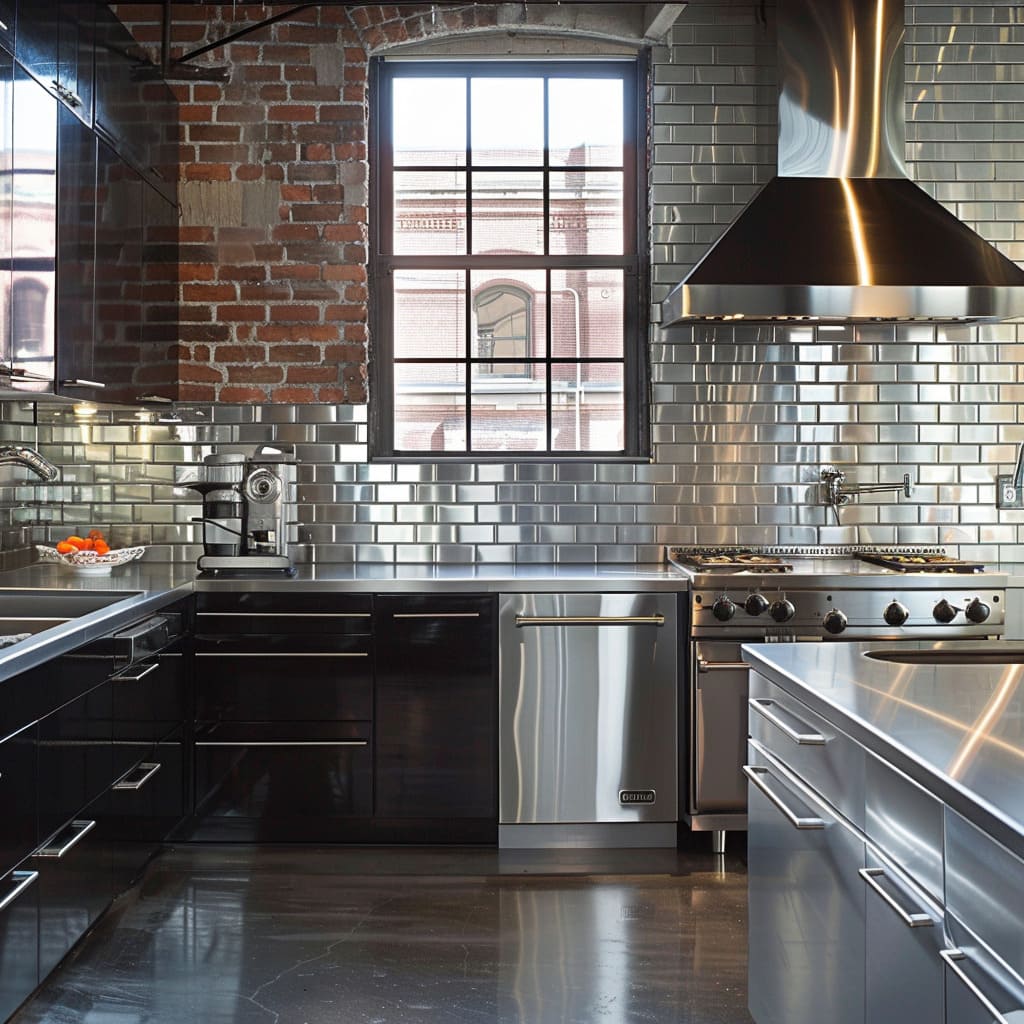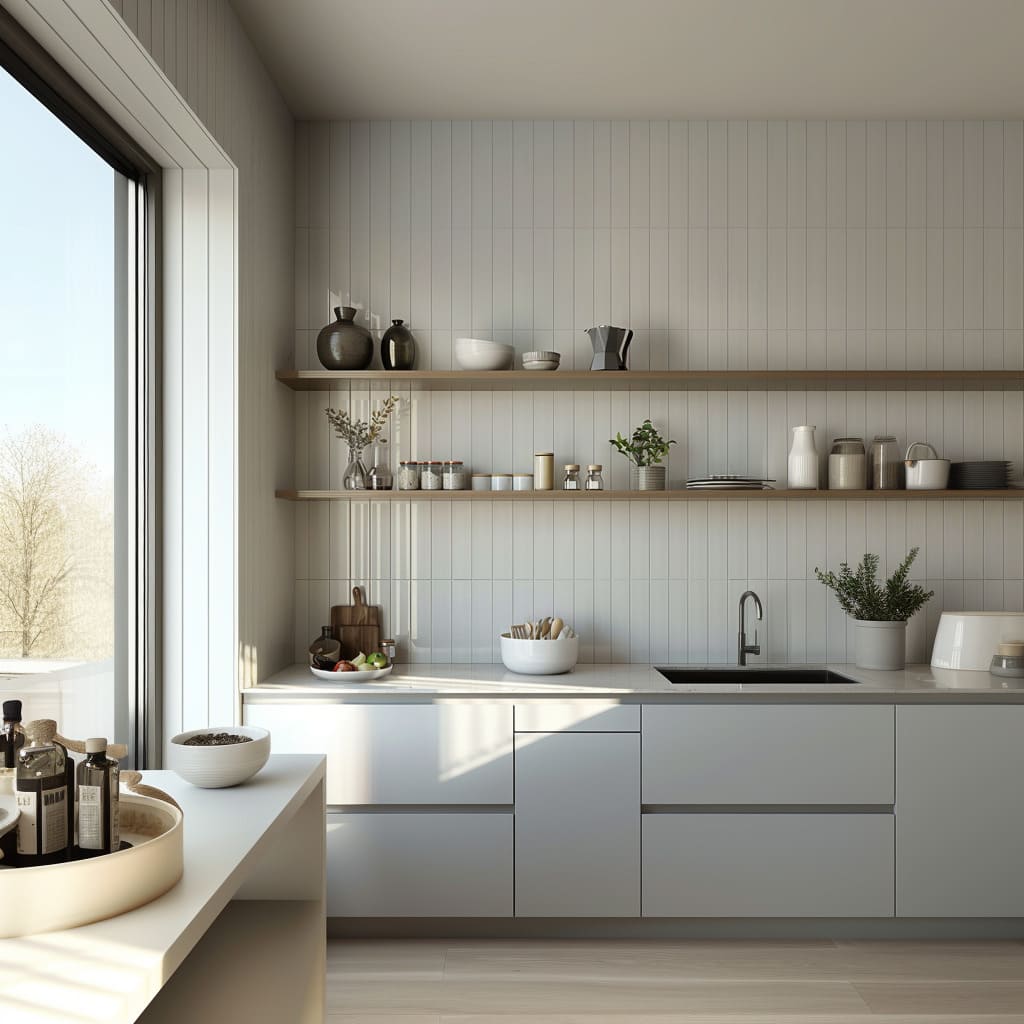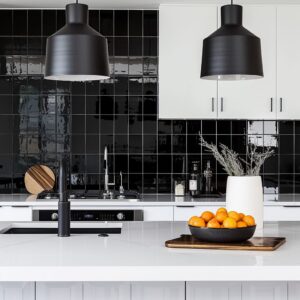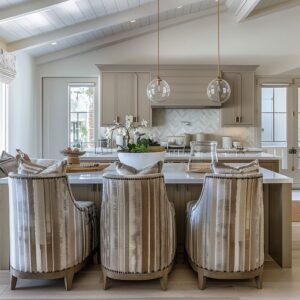Subway tiles have long been a favorite choice for kitchen backsplashes due to their classic and versatile design. Originating from the early 20th century New York City subway stations, these tiles have evolved significantly in their application and style.
This article explores modern trends and creative ideas for incorporating subway tiles into kitchen renovations, offering a comprehensive guide to creating a stylish and functional backsplash.
Subway Tile Size Variations
Classic Size
The traditional 3” x 6” subway tile remains a staple in many kitchens. Its timeless appeal lies in its simplicity and adaptability, fitting well into various design aesthetics from classic to contemporary.
These tiles are often arranged in a horizontal offset pattern, creating a clean and orderly look that complements any kitchen decor.
Large Format Tiles
For those seeking a bolder statement, large format subway tiles, such as 4” x 8” or 4” x 12”, are becoming increasingly popular.
These larger tiles reduce the number of grout lines, creating a more seamless and expansive appearance. They work particularly well in modern kitchens where a sleek and uninterrupted surface is desired.
Miniature Tiles
Miniature subway tiles, like 2” x 4”, offer a more intricate and detailed aesthetic. These smaller tiles can add a delicate touch to a kitchen, creating a refined and textured backdrop.
They are ideal for accent areas or smaller kitchen spaces where a more detailed design can make a significant impact.
Unique Patterns
Herringbone Pattern
The herringbone pattern involves arranging subway tiles at a 45-degree angle to create a zigzag effect. This dynamic layout adds movement and visual interest to the backsplash, making it a focal point in the kitchen.
It pairs well with both traditional and contemporary styles, providing a unique twist on the classic subway tile design.
Vertical Stack
In contrast to the traditional horizontal layout, the vertical stack pattern emphasizes the height of the space, creating a sleek and modern look.
This arrangement works particularly well in kitchens with high ceilings or those looking to create a more streamlined and organized appearance.
Diagonal Layout
Arranging subway tiles diagonally offers a unique and unconventional look.
This pattern can add a sense of depth and dimension to the backsplash, making it stand out. It’s an excellent choice for homeowners seeking a distinctive and eye-catching design.
Offset Pattern
The classic offset pattern, also known as a running bond or brick pattern, remains a popular choice for subway tiles. Each tile is offset by half the width of the tile below it, creating a staggered effect that is both timeless and modern.
This pattern works well in almost any kitchen design, providing a balanced and harmonious look.
Color Variations
Bold Colors
Moving away from the classic white, bold colors like deep blues, greens, and blacks are being used to make a statement. These vibrant hues can transform a kitchen, adding depth and character.
Bold-colored subway tiles are perfect for creating an accent wall or a focal point in the kitchen, bringing energy and personality to the space.
Pastels
Soft pastel hues such as mint green, blush pink, and baby blue offer a subtle pop of color while maintaining a light and airy feel.
These colors are ideal for creating a soothing and inviting kitchen environment. Pastel subway tiles work well with white or light-colored cabinetry, enhancing the overall brightness of the space.
Neutral Tones
Neutral tones like grey, beige, and taupe are popular for creating a sophisticated and understated look. These colors provide a versatile backdrop that can complement a variety of kitchen styles and color schemes.
Neutral subway tiles are perfect for those seeking a timeless and elegant kitchen design.
Finish Options
Matte Finish
Matte subway tiles provide a contemporary and understated look that minimizes glare and reflections. This finish adds a soft and sophisticated touch to the backsplash, creating a calm and elegant atmosphere.
Matte tiles are particularly well-suited for modern kitchens where a sleek and muted aesthetic is desired.
Glossy Finish
Glossy subway tiles remain popular for their ability to reflect light and brighten up the kitchen space.
The shiny surface of these tiles enhances the overall luminosity of the room, making it feel more open and spacious. Glossy tiles are an excellent choice for smaller kitchens or those with limited natural light.
Textured Finish
Textured or handcrafted subway tiles add depth and a tactile element to the backsplash. These tiles often feature subtle variations in surface texture, creating a unique and artisanal look.
Textured tiles can add a touch of character and charm to any kitchen, making the backsplash a standout feature.
Grout Choices
Contrasting Grout
Using a contrasting grout color, such as black grout with white tiles, highlights the tile pattern and adds a graphic element to the backsplash. This bold choice can enhance the overall design, making the tile layout more pronounced and visually interesting.
Matching Grout
Grout that matches the tile color creates a seamless and unified appearance. This approach allows the tiles to blend together, creating a smooth and continuous surface.
Matching grout is ideal for those seeking a minimalist and cohesive look.
Colored Grout
For a playful touch, colored grout can be used to add an unexpected pop of color and personality.
This choice can complement or contrast with the tile color, adding an extra layer of design to the backsplash. Colored grout is perfect for homeowners looking to infuse their kitchen with a bit of fun and creativity.
Material Innovations
Glass Subway Tiles
Glass subway tiles offer a sleek, reflective surface that can enhance the light and modernity of the kitchen. These tiles are available in a variety of colors and finishes, providing a wide range of design possibilities.
Glass tiles are perfect for creating a bright and airy backsplash that catches the light beautifully.
Metallic Subway Tiles
Metallic finishes, such as stainless steel or copper, add an industrial edge and a touch of luxury to the kitchen.
These tiles can create a bold and modern look, reflecting light and adding a bit of sparkle to the backsplash. Metallic tiles are ideal for contemporary kitchens with an industrial or high-end design.
Marble Subway Tiles
Marble tiles provide a high-end, classic look with natural veining that adds character and sophistication. These tiles are perfect for creating an elegant and timeless backsplash that pairs well with various kitchen styles.
Marble subway tiles can add a touch of luxury and refinement to any kitchen.
Creative Installations
Mixed Patterns
Combining different patterns within the same backsplash, such as a herringbone center with a vertical stack border, adds visual interest and complexity to the design. This approach allows for creativity and personalization, making the backsplash a unique feature in the kitchen.
Full Wall Backsplashes
Extending subway tiles from the countertop to the ceiling creates a dramatic and cohesive look. This full-wall installation enhances the sense of space and adds a striking visual element to the kitchen.
It works particularly well in open-plan kitchens where the backsplash can be seen from multiple angles.
Niche Accents
Using subway tiles to highlight niches or recessed areas within the kitchen adds depth and functionality. These tiled niches can be used to store items or display decorative elements, integrating practical storage with stylish design.
Integration with Other Materials
Wood Accents
Pairing subway tiles with wooden shelves or cabinets adds warmth and contrast to the kitchen. The combination of natural wood and sleek tiles creates a balanced and inviting atmosphere, blending modern and rustic elements seamlessly.
Metal Accents
Incorporating metal fixtures, such as faucets and cabinet handles, enhances the modern aesthetic and ties in with metallic tile finishes. This approach creates a cohesive look and adds a touch of industrial charm to the kitchen.
Backsplash Features
Incorporated Shelving
Using subway tiles to back open shelving creates a cohesive and integrated look. The tiles provide a stylish backdrop for the shelves, allowing decorative items and kitchen essentials to stand out.
This approach combines functionality with aesthetic appeal.
Feature Walls
Creating a feature wall behind the stove or sink with subway tiles draws attention and adds a focal point to the kitchen.
This design element can be achieved by using contrasting colors, unique patterns, or different materials to make the area stand out.
Case Studies
Classic White with Bold Grout
A sleek kitchen features classic white subway tiles arranged in a traditional offset pattern. Black grout highlights the tiles, adding a modern, graphic touch that contrasts beautifully with the light grey cabinets and quartz countertops.
Herringbone Elegance
This contemporary kitchen showcases large-format subway tiles in a striking herringbone pattern. The glossy finish of the deep blue tiles reflects light, creating a vibrant and elegant backsplash that complements the white marble countertops and stainless steel appliances.
Vertical Modernity
A minimalist kitchen design includes vertical stack subway tiles in a soft matte grey. This unique arrangement emphasizes the height of the space, paired with white cabinetry and open shelving for a clean, airy feel.
Playful Pastels
In this charming kitchen, pastel green subway tiles arranged in a classic offset pattern add a subtle pop of color. The tiles are paired with matching pastel green cabinets and light wooden countertops for a fresh, inviting atmosphere.
Textured Sophistication
This sophisticated kitchen features white textured subway tiles with a handcrafted look. The matte finish tiles provide depth and interest, harmonizing with dark wood cabinets and brass hardware for a warm, luxurious vibe.
Full Wall Impact
Subway tiles in a neutral beige color cover the entire wall from countertop to ceiling in this modern kitchen. The continuous, seamless look enhances the spacious feel, while dark granite countertops and black fixtures add contrast.
Mixed Patterns
A dynamic kitchen design includes a mix of subway tile patterns, combining a herringbone center with a vertical stack border. The white tiles with grey grout create a cohesive look that highlights the custom wooden cabinetry and concrete countertops.
Metallic Glamour
This industrial-chic kitchen showcases stainless steel subway tiles with a polished finish. The reflective surface adds a touch of glamour and pairs perfectly with the black cabinets, concrete floors, and exposed brick walls.
Marble Luxury
A luxurious kitchen features marble subway tiles with natural veining. The tiles are arranged in a classic offset pattern, enhancing the elegant marble countertops and white shaker-style cabinets for a timeless look.
Contrasting Charm
In this cozy kitchen, small-format subway tiles in navy blue are paired with bright white grout. The contrasting colors create a bold, eye-catching backsplash that complements the white cabinetry and rustic wooden countertops.
Conclusion
Subway tiles offer a versatile and stylish option for kitchen backsplashes, with endless possibilities for customization and creativity. By exploring various sizes, patterns, colors, finishes, and installation methods, homeowners can create a backsplash that reflects their personal style and enhances the overall look of their kitchen.
Whether seeking a bold statement or a subtle touch, subway tiles provide a timeless solution that continues to evolve with modern design trends.
Additional Tips
Maintenance and Care
Different types of subway tiles require specific maintenance to keep them looking their best. Glass and glossy tiles should be cleaned with gentle, non-abrasive cleaners to maintain their shine, while matte and textured tiles may need more regular dusting to keep their surfaces free from grime.
Budget Considerations
When planning a kitchen renovation, it’s important to consider the cost of materials and installation. While some subway tiles can be quite affordable, others, like marble or custom designs, may require a higher budget.
Balancing high-quality materials with cost-effective options can help achieve a stunning backsplash within budget constraints. To get a better understanding of the expenses involved in your kitchen remodel, use our home renovation and remodel cost calculator.
This tool will provide you with an approximate budget, helping you plan your renovation more effectively and avoid unexpected costs.
Professional vs. DIY Installation
Deciding between hiring professionals and undertaking a DIY project depends on the complexity of the design and the homeowner’s skill level.
While DIY installations can be cost-effective, professional tilers can ensure a perfect finish, especially for intricate patterns and high-end materials.

